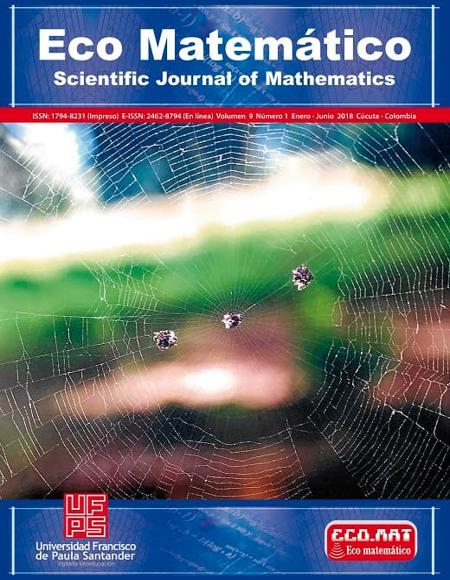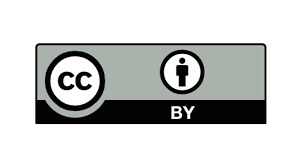¿Por qué Aquiles adelanta a la tortuga?
¿Por qué Aquiles adelanta a la tortuga?
Main Article Content
Abstract
It is discussed in this communication, how one can provide an explanation of the Zeno’s paradox “Achilles and the tortoise” using the sum of infinitely decreasing geometric progression and implement it in the educational process in the middle school.
Downloads
Download data is not yet available.
Article Details
References
Αριστοτέλης. (350 aC). Φυσικὴ ἀκρόασις VI:9, 239b15.
Black M. (1951). Achilles and the Tortoise. Analysis, 11(5), 91–101. doi: 10.1093/ analys/11.5.91.
Cauchy A.-L. (1821). Cours d’Analyse de l’École Royale Polytechnique; I.re Partie. Analyse algébrique. L’Imprimerie Royale, Debure frères, Libraires du Roi et de la Bibliothèque du Roi.
Donnan F. G. (1944). Achilles and the Tortoise. Nature, 153, 464. doi: 10.1038/153464b0.
Egan K. (1992). Imagination in Teaching and Learning: The Middle School Years. Chicago: University of Chicago Press.
Hinton J. M., Martin C. B. (1954). Achilles and the Tortoise. Analysis, 14(3), 56–68. doi: 10.1093/analys/14.3.56.
Jones P. C. (1946). Achilles and the Tortoise. Mind, 55(219), 341–345. doi: 10.1093/ mind/LV.219.341.
Lee H. N. (1965). Are Zeno’s Paradoxes Based on a Mistake? Mind, 74(296), 563–570. doi: 10.1093/mind/LXXIV.296.563.
Misra B., Sudarshan E. C. G. (1977). The Zeno’s paradox in quantum theory. Journal of Mathematical Physics, 18(4), 756–763. doi: 10.1063/1.523304.
Papa-Grimaldi A. (1996). Why Mathematical Solutions of Zeno’s Paradoxes Miss the Point: Zeno’s One and Many Relation and Parmenides’ Prohibition. The Review of Metaphysics, 50(2), 299–314.
Rowland T. (2008). The purpose, design and use of examples in the teaching of elementary mathematics. Educational studies in mathematics, 69(2), 149–163. doi: 10.1007/s10649-008-9148-y.
Thomas L. E. (1952). Achilles and the Tortoise. Analysis, 12(4), 92–94. doi: 10.1093/ analys/12.4.92.
Thomas R. (2000). Mathematical mysteries: Zeno’s Paradoxes. Plus. https://plus. maths.org/content/mathematical-mysteries-zenos- paradoxes.
Van de Walle J. A., Karp K. S., Williams J. M. B. (2007). Elementary and middle school mathematics. Teaching development. Boston: Pearson.
Black M. (1951). Achilles and the Tortoise. Analysis, 11(5), 91–101. doi: 10.1093/ analys/11.5.91.
Cauchy A.-L. (1821). Cours d’Analyse de l’École Royale Polytechnique; I.re Partie. Analyse algébrique. L’Imprimerie Royale, Debure frères, Libraires du Roi et de la Bibliothèque du Roi.
Donnan F. G. (1944). Achilles and the Tortoise. Nature, 153, 464. doi: 10.1038/153464b0.
Egan K. (1992). Imagination in Teaching and Learning: The Middle School Years. Chicago: University of Chicago Press.
Hinton J. M., Martin C. B. (1954). Achilles and the Tortoise. Analysis, 14(3), 56–68. doi: 10.1093/analys/14.3.56.
Jones P. C. (1946). Achilles and the Tortoise. Mind, 55(219), 341–345. doi: 10.1093/ mind/LV.219.341.
Lee H. N. (1965). Are Zeno’s Paradoxes Based on a Mistake? Mind, 74(296), 563–570. doi: 10.1093/mind/LXXIV.296.563.
Misra B., Sudarshan E. C. G. (1977). The Zeno’s paradox in quantum theory. Journal of Mathematical Physics, 18(4), 756–763. doi: 10.1063/1.523304.
Papa-Grimaldi A. (1996). Why Mathematical Solutions of Zeno’s Paradoxes Miss the Point: Zeno’s One and Many Relation and Parmenides’ Prohibition. The Review of Metaphysics, 50(2), 299–314.
Rowland T. (2008). The purpose, design and use of examples in the teaching of elementary mathematics. Educational studies in mathematics, 69(2), 149–163. doi: 10.1007/s10649-008-9148-y.
Thomas L. E. (1952). Achilles and the Tortoise. Analysis, 12(4), 92–94. doi: 10.1093/ analys/12.4.92.
Thomas R. (2000). Mathematical mysteries: Zeno’s Paradoxes. Plus. https://plus. maths.org/content/mathematical-mysteries-zenos- paradoxes.
Van de Walle J. A., Karp K. S., Williams J. M. B. (2007). Elementary and middle school mathematics. Teaching development. Boston: Pearson.







